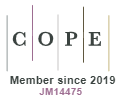Why wear a prosthetics when you could become a superhero instead? Children, Prostheses, and a Few Reflections on How a Dictionary of Critical Disability Studies Can Enrich the Language of New Childhood Studies
DOI:
https://doi.org/10.18778/1733-8069.13.4.02Keywords:
children, prosthetic power, visual activism, disabilityAbstract
The article aims at revealing the potential of critical disability studies’ concepts (prosthetic power, visual activism) as tools in the analysis of disabled children’s experiences within the new childhood studies paradigm. In disability studies, the childhoods of disabled children are still marginalized, and similarly—in childhood studies, there is still not enough space for analyzing disability as social marker (compared to gender, race, and class). I start with three examples of 3D children’s prosthetics projects that serve as starting points for redefining what an artificial limb can become—a platform of play shared with others, a superhero’s attribute, and a tool for agency in co-designing (oneself)—to find how they resonate with theoretical and interpretative endeavors of critical disability studies. I then attempt to set them against the premises of new childhood studies and see—taking as an example disabled children’s childhood studies—what can possibly emerge at the crossroads.
Downloads
References
Armstrong Tim (1998) Modernism, Technology and the Body. A Cultural Study. Cambridge: Cambridge University Press.
Google Scholar
Chislenko Alexander (1995) Legacy Systems and Functional Cyborgization of Humans [dostęp 15 stycznia 2017 r.]. Dostępny w Internecie: http://www.lucifer.com/~sasha/articles/Cyborgs.html.
Google Scholar
Clogston John S. (1994) Disability Coverage in American Newspapers [w:] Jack Adolph Nelson, ed., The Disabled, the Media, and the Information Age. Westport: Greenwood Press, s. 45–53.
Google Scholar
Curran Tillie, Runswick-Cole Katherine (2014) Disabled Children’s Childhood Studies: A Distinct Approach? „Disability & Society”, vol. 29, no. 10, s. 1617–1630.
Google Scholar
Fukuyama Francis (2004) Koniec człowieka. Konsekwencje rewolucji biotechnologicznej. Przełożył Bartłomiej Pietrzyk. Kraków: Znak.
Google Scholar
Garland-Thomson Rosemarie (2009) Staring: How We Look? New York: Oxford University Press.
Google Scholar
Goodley Dan, Runswick-Cole Katherine (2012) The Body as Disability and Possability: Theorizing the “Leaking, Lacking, and Excessive” Bodies of Disabled Children. „Scadinavian Journal of Disability Research” [dostęp 15 stycznia 2017 r.]. Dostępny w Internecie: http://www.mcgill.ca/igsf/files/igsf/goodley_and_runswick_cole_bodies_as_disability_and_possability.pdf.
Google Scholar
Grenberg Harvey (2001) Heimlich Maneuvers: On Certain Tendency of Horror and Speculative Cinema. „PsyArt. An Online Journal for the Psychological Study of the Arts” [dostęp 15 stycznia 2017 r.] Dostępny w Internecie: http://psyartjournal.com/article/show/greenberg-heimlich_maneuvers_on_a_certain_tendency.
Google Scholar
James Allison, Prout Alan, eds. (1990) Constructing and Reconstructing Childhood: Contemporary Issues in the Sociological Study of Childhood. Oxford: Routledge Falmer.
Google Scholar
Masahiro Mori (1970) The Uncanny Valley. „Energy”, vol. 7, no. 4, s. 33–35.
Google Scholar
Mitchell David T., Snyder Sharon L. (2000) Narrative Prosthesis: Disability and the Dependencies of Discourse. Ann Arbor: The University of Michigan Press.
Google Scholar
Mullins Aimee (2009) How My Legs Give Me Superpowers? [dostęp 15 stycznia 2017 r.]. Dostępny w Internecie: http://www.tv.com/web/ted-talks/watch/aimee-mullins-how-my-legs-give--me-super-powers-1545902/.
Google Scholar
Shakespeare Tom, Watson Nick (2002) The Social Model of Disability: An Outdated Ideology? „Research in Social Science and Disability”, vol. 2, s. 9–28.
Google Scholar
Shildrick Margrit (2009) Dangerous Discourses of Disability, Subjectivity, and Sexuality. Basingstoke: Palgrave MacMillan.
Google Scholar
Stańczyk Marta (2016) „Nostalgia for the Future...”: Prosthesis as a Popcultural Weapon? „Transmissions”, vol. 1, no. 1, s. 68–81.
Google Scholar
Torres Carlos Arturo (2014) Prosthetics for Kids as a Creative and Social Tool. Empowering Children to Explore Their Strongest Side Through Creativity [dostęp 15 stycznia 2017 r.]. Dostępny w Internecie: https://issuu.com/carlosidea/docs/iko_prosthetics_for_kids_as_a_creat.
Google Scholar
Turmel André (2008) A Historical Sociology of Childhood. Developmental Thinking, Categorization and Graphic Visualization. Cambridge: Cambridge University Press.
Google Scholar
Watson Nick (2012) Theorizing the Lives of Disabled Children: How Can Disability Theory Help? „Children&Society”, vol. 26, no. 3, s. 192–202.
Google Scholar
Downloads
Published
How to Cite
Issue
Section
License

This work is licensed under a Creative Commons Attribution-NonCommercial-NoDerivatives 4.0 International License.














